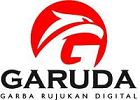Deepening Learning and Material on Atomic Structure and Periodic Properties of Elements for Teachers in the Pangandaran Region [Pendalaman Pembelajaran serta Materi Struktur Atom dan Sifat Periodik Unsur untuk Guru di Wilayah Pangandaran]
Abstract
The effectiveness of learning can be increased by strengthening teacher’s competence and pedagogy. The targets of learning chemistry during the industrial revolution 4.0 include understanding the concept of chemistry and its relation to daily life. Based on the results of the 2017-2019 National Examination (UN) study conducted by the madrasa team, it is known that atomic structure and chemical periodicity is one of the materials considered difficult and in teachers and students, so that understanding on these topics needs to be improved. Increasing the understanding of chemical concepts needs to be solved intensively by demanding a variety of problem that is packaged through learning from daily phenomena. One type of learning that can be used is Problem Based Learning (PBL). The selection of PBL learning because it is start with complex daily life problems and also demands High Order Thinking (HOTS) of students and teachers. PBL-based learning can be socialized to teachers through Community Service (PKM) activities using the Community Education method in the form of workshops and assignments including: curriculum, conception, misconception analysis, and preparation of learning tools, so in the future teachers can develop a learning tool based on PBL independently with right conception.
Efektivitas pembelajaran dapat ditingkatkan dengan cara menguatkan kompetensi profesional dan pedagogi seorang guru. Target pembelajaran kimia pada masa revolusi industri 4.0 diantaranya pemahaman konsep kimia dan keterkaitannya dengan kehidupan sehari-hari. Berdasarkan hasil telaah Ujian Nasional (UN) 2017-2019 yang dilakukan oleh tim madrasah, diketahui bahwa materi struktur atom dan sifat periodik unsur adalah salah satu materi yang dianggap sulit dan sering ditemukan miskonsepsi pada guru dan siswa, sehingga pemahaman pada topik tersebut perlu ditingkatkan. Peningkatan pemahaman konsep kimia semacam ini perlu dilakukan secara intensif dengan menuntut ragam penyelesaian masalah yang dikemas melalui pembelajaran dari fenomena keseharian dan penyelesaian masalah. Salah jenis pembelajaran yang dapat digunakan ini adalah pembelajaran Problem Based Learning (PBL). Pemilihan pembelajaran dapat PBL dilakukan karena pembelajaran ini diawali dari masalah kehidupan sehari-hari yang bersifat kompleks dan juga menuntut tuntutan kemampuan High Order Thinkings (HOTS) siswa dan guru. Pembelajaran berbasis PBL dapat disosialisasikan kepada guru melalui kegiatan Pengabdian Kepada Masyarakat (PKM) dengan menggunakan metode Pendikan Masyarakat berupa workshop dan penugasan meliputi: analisis kurikulum, analisis konsepsi, analisis miskonsepsi, dan penyususnan perangkat pembelajaran, sehingga diharapkan kedepannya guru dapat menyusun suatu perangkat pembelajaran berbasis PBL secara mandiri dengan konsepsi kimia yang baik
Keywords
Full Text:
PDFReferences
Firman, H. (2013). Alignment between National Examination and National Content Standard of High School Chemistry. Mathematics, Science, Computer Education International Seminar. I. Bandung: Indonesia University of Education.
Georgiadou, A., & Tsaparlis, G. (2000). Chemistry Teaching in Lower Secondary School with Methods Based on: A) Psychological Theories; B) The Macro, Representational, and Submicro Levels of Chemistry. Chemistry Education: Research and Practice in Europe, I(2), 217-226.
Gilbert, J. (2005). Catching the Knowledge Wave?: The Knowledge Society and the Future of Education. PhilPapers. Diambil kembali dari https://philpapers.org/rec/GILCTK
Gilbert, J., & Treagust, D. (2009). Multiple Representations in Chemical Education. Berlin: Springer Publishing.
Gräber, W., Nentwig, P., Becker, H., Sumfleth, E., Pitton, A., Wollweber, K., & Jorde, D. (2001). Scientific Literacy: From Theory to Practice. Dalam W. Gräber, P. Nentwig, H. Becker, E. Sumfleth, A. Pitton, K. Wollweber, & D. Jorde, Research in Science Education - Past, Present, and Future (hal. 61-70). Berlin: Springer Publishing. doi:https://doi.org/10.1007/0-306-47639-8_6
Irez, S., & Cakir, M. (2006). Critical Reflective Approach to Teach the Nature of Science: A Rationale and Review of Strategies. Turkish Science Education, III(2).
Oludipe, D., & Awokoy, J. (2010). Effect of Cooperative Learning Teaching Strategy on the Reduction of Students’ Anxiety for Learning Chemistry. Turkish Science Education, VII(1).
Shwartz, Y., Ben-Zvi, R., & Hofstein, A. (2006). The Use of Scientific Literacy Taxonomy for Assessing the Development of Chemical Literacy among High-School Students. Chemistry Education Research and Practice, VII(4), 203-225.
Turiman, P., Omar, J., Daud, A., & Osman, K. (2012). Fostering the 21st Century Skills through Scientific Literacy and Science Process Skills. Procedia - Social and Behavioral Sciences (hal. 110-116). Elsevier Ltd
DOI: https://doi.org/10.17509/jpi.v1i1.47296
Refbacks
- There are currently no refbacks.

This work is licensed under a Creative Commons Attribution-NonCommercial-ShareAlike 4.0 International License.


